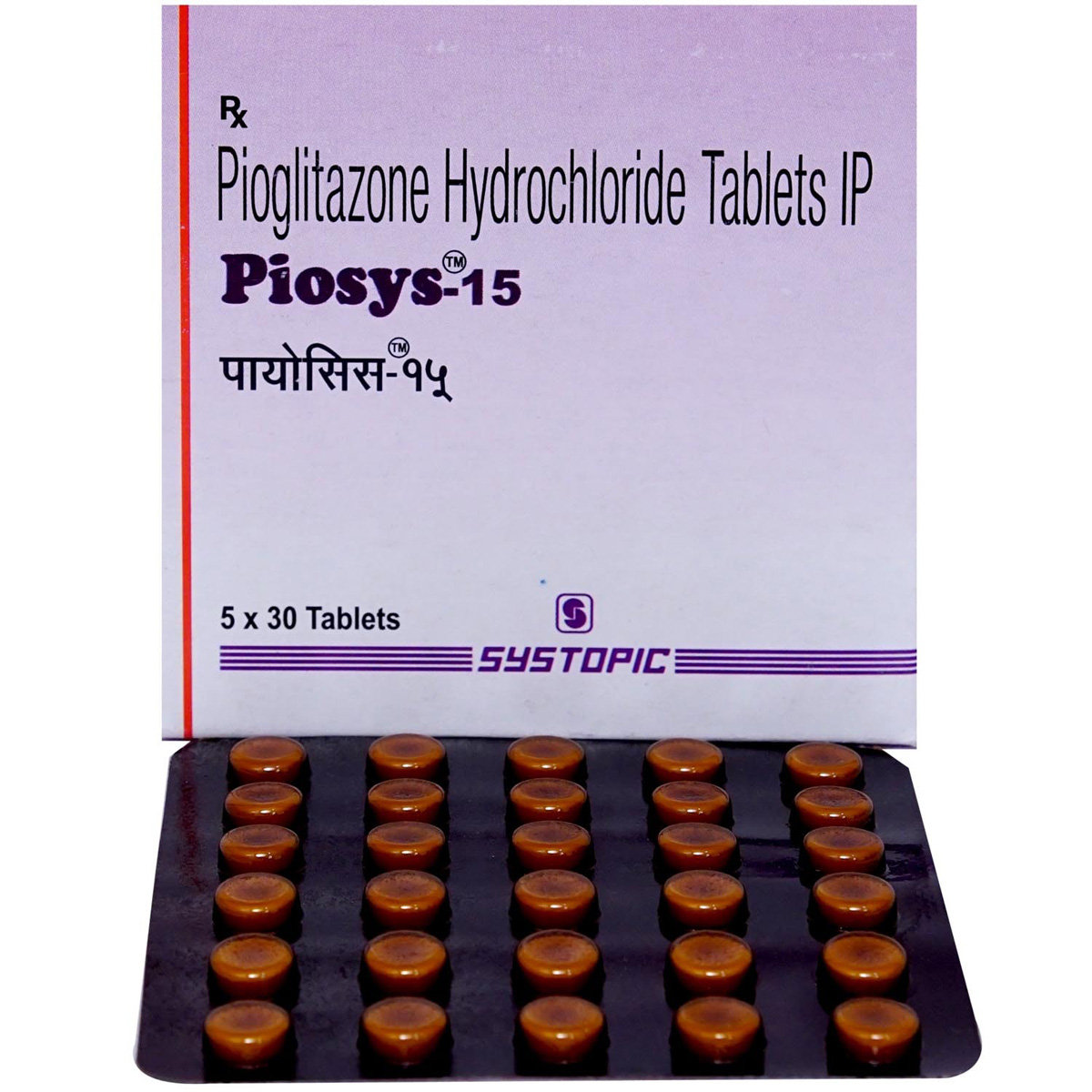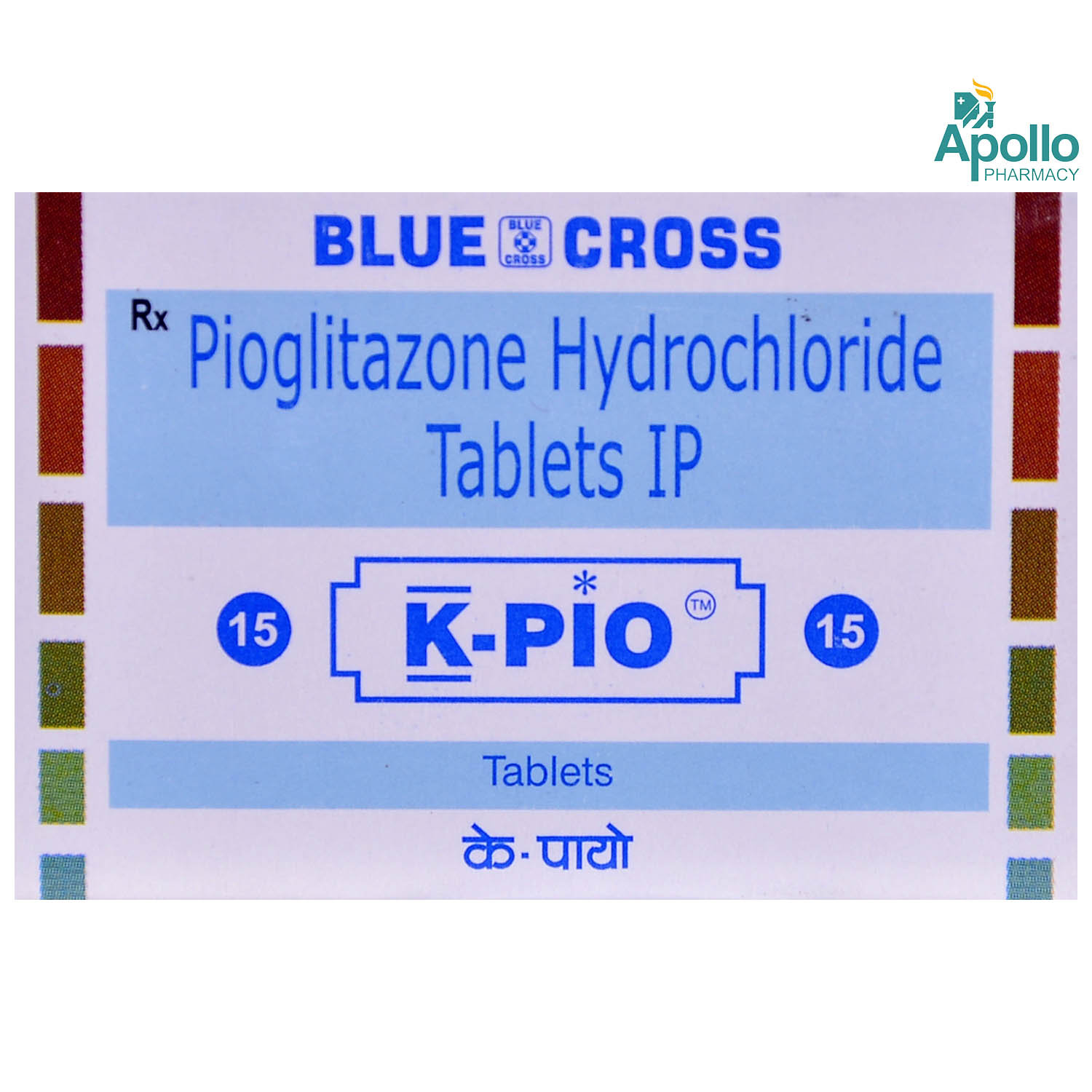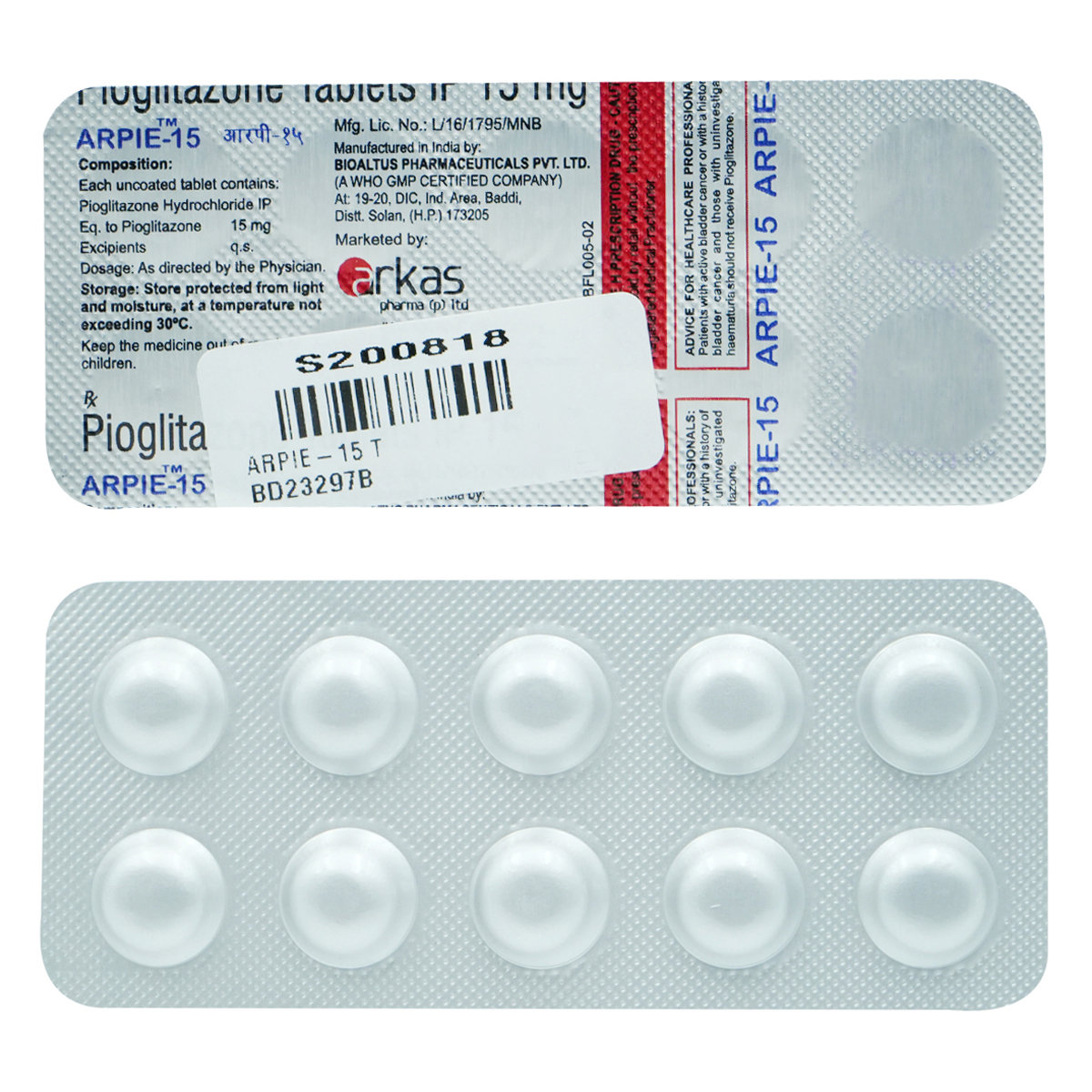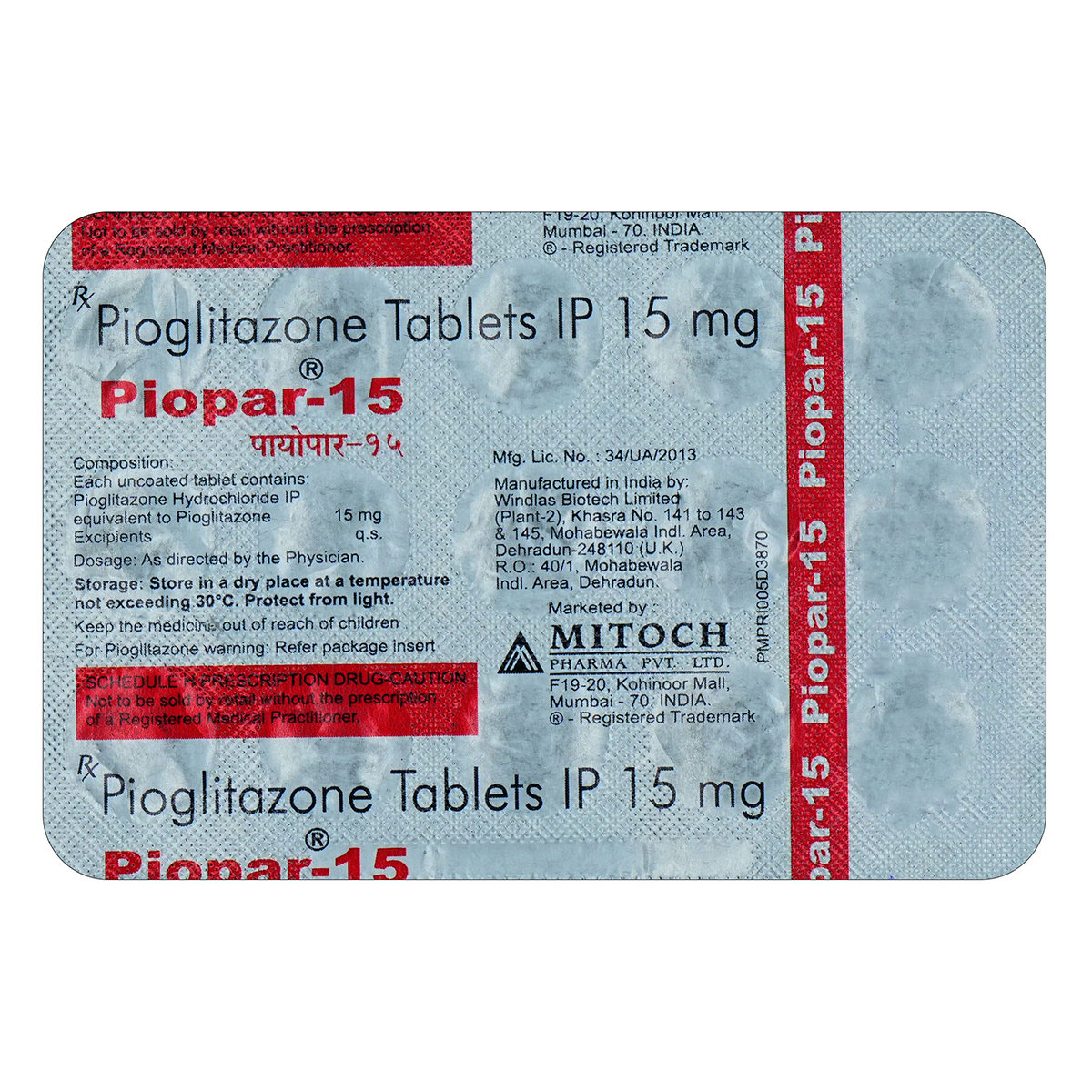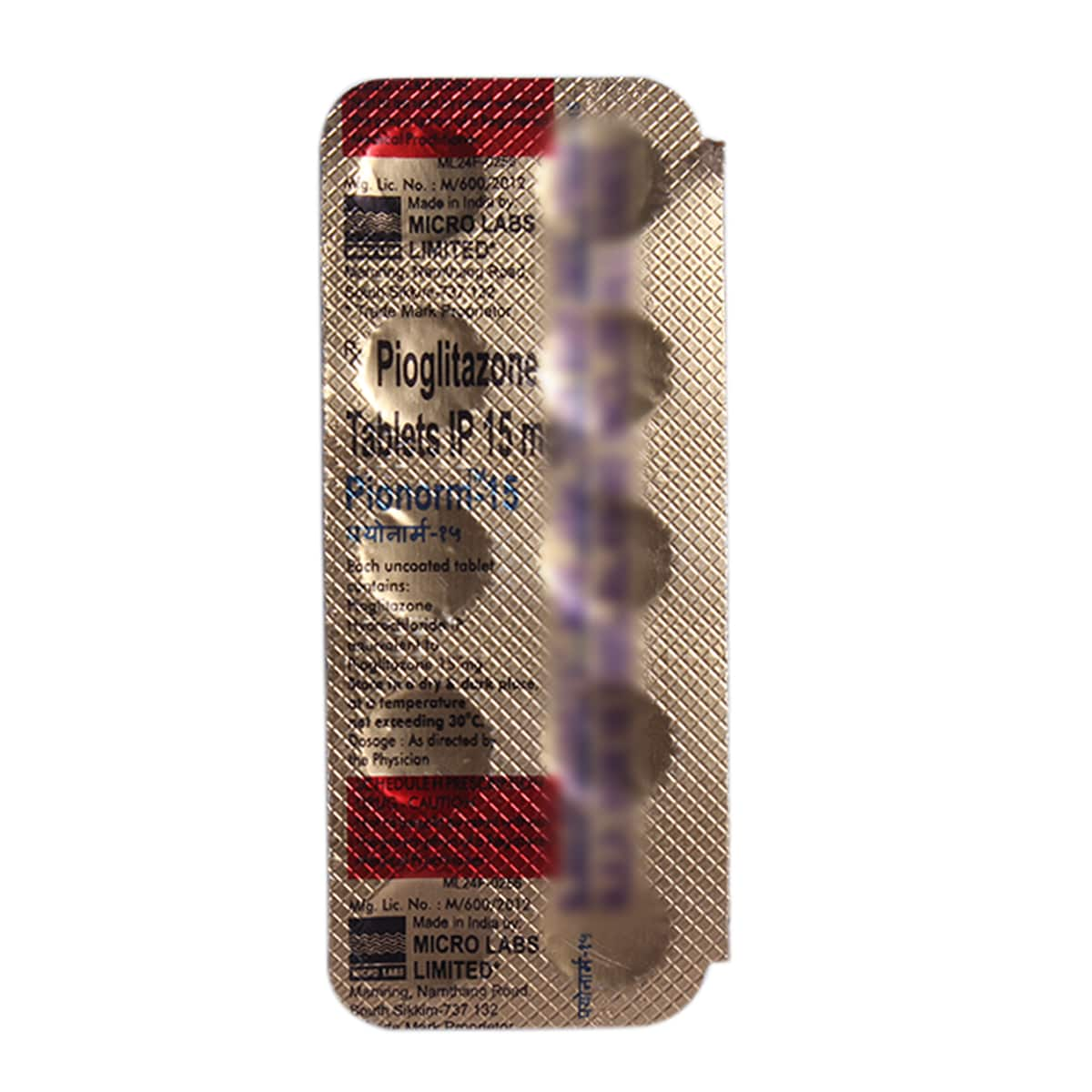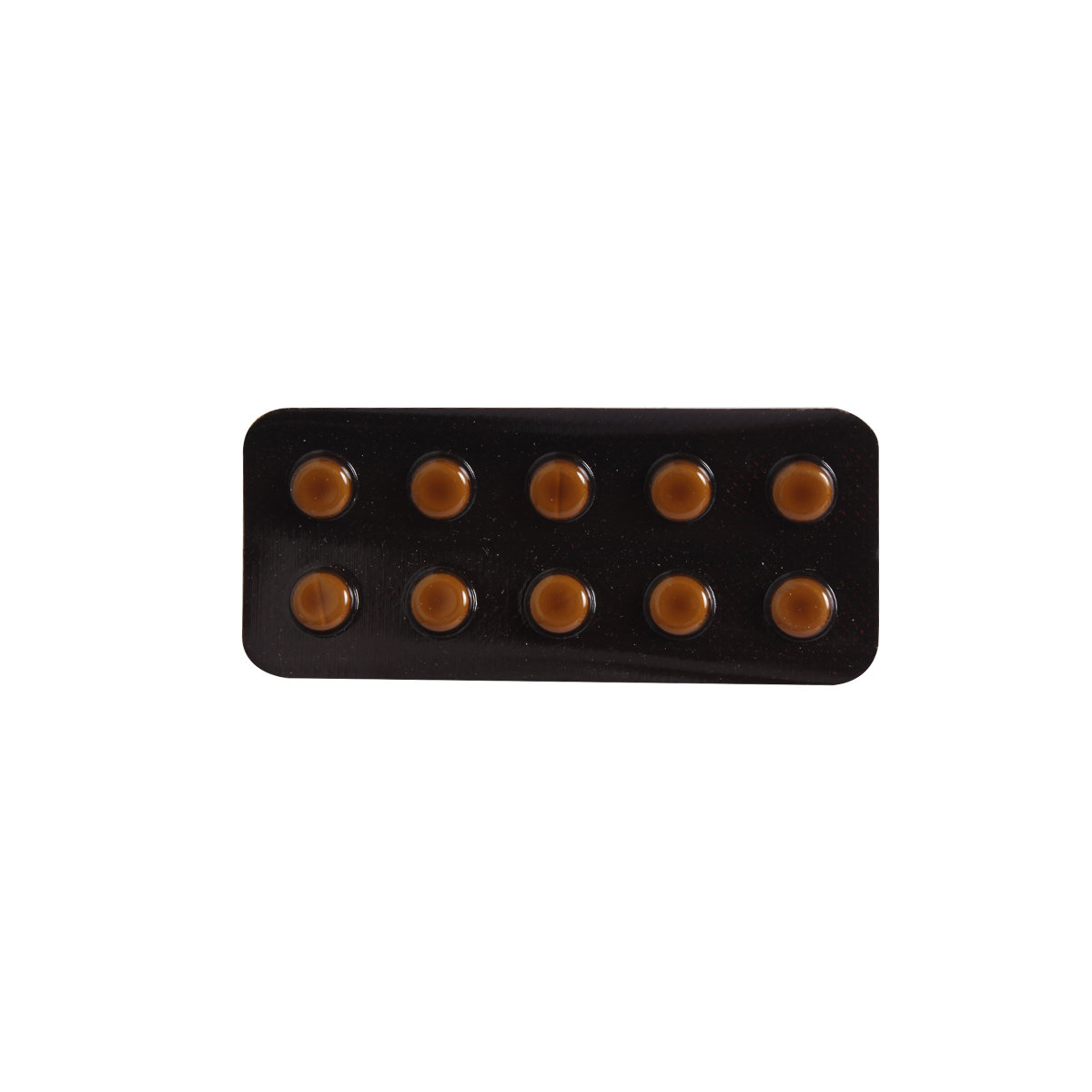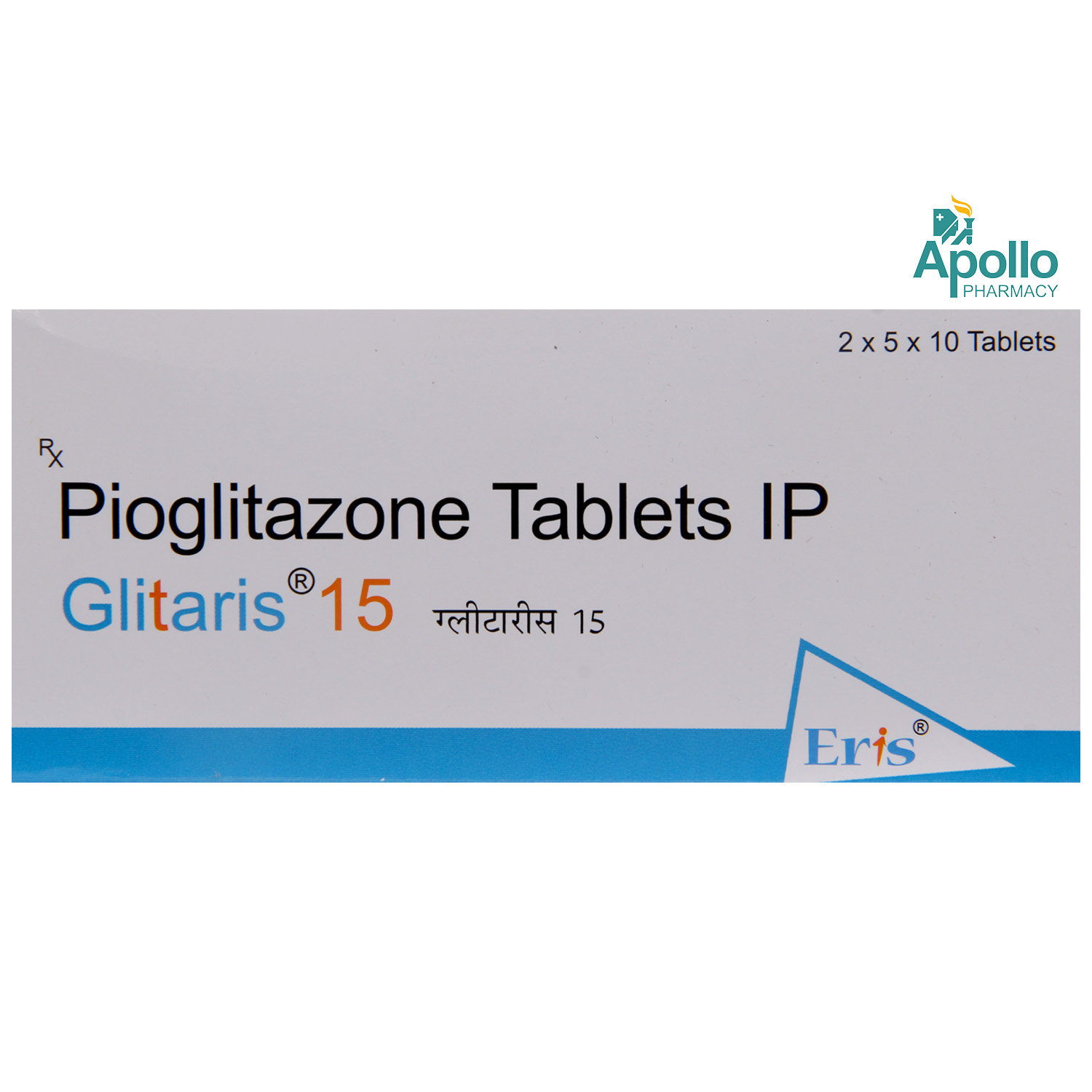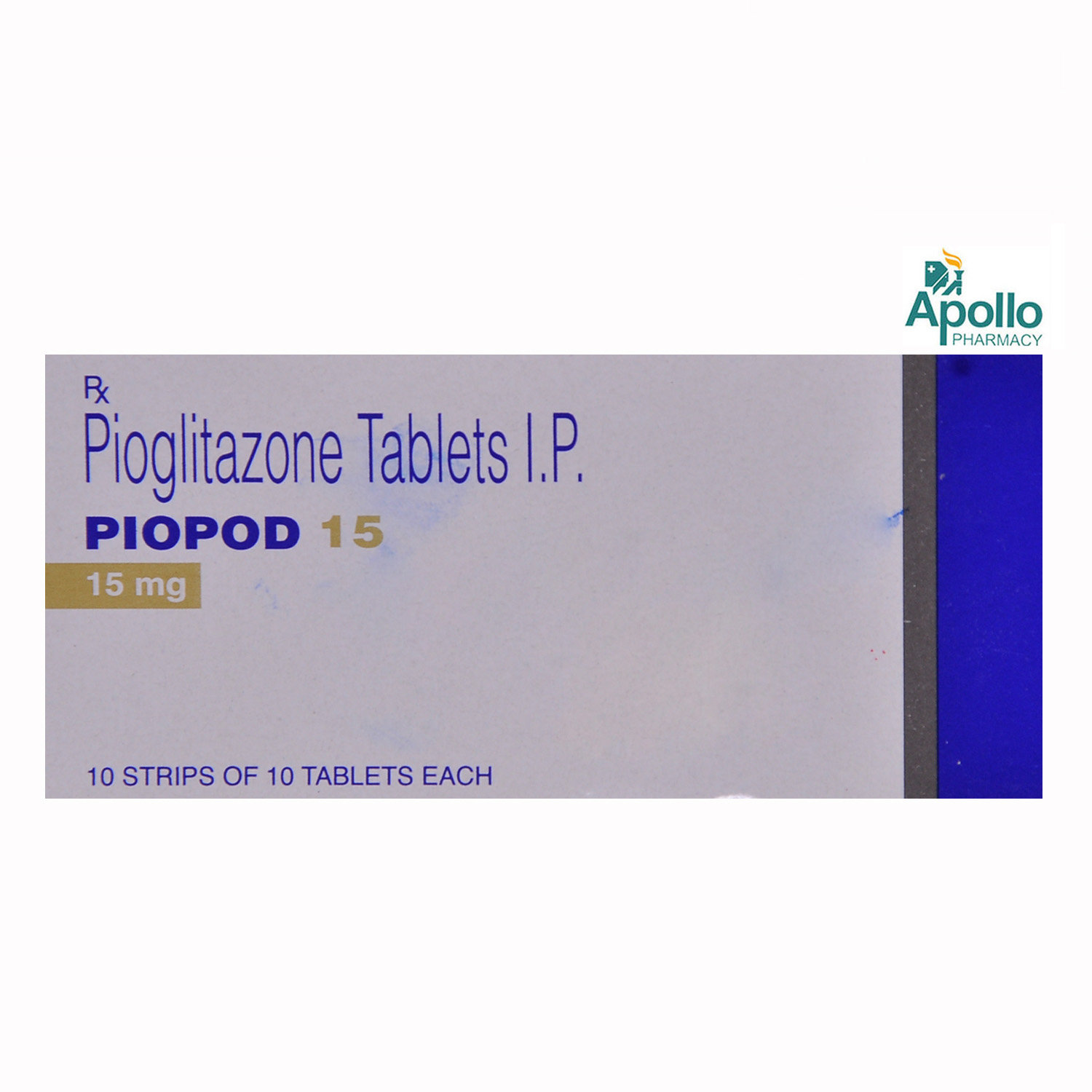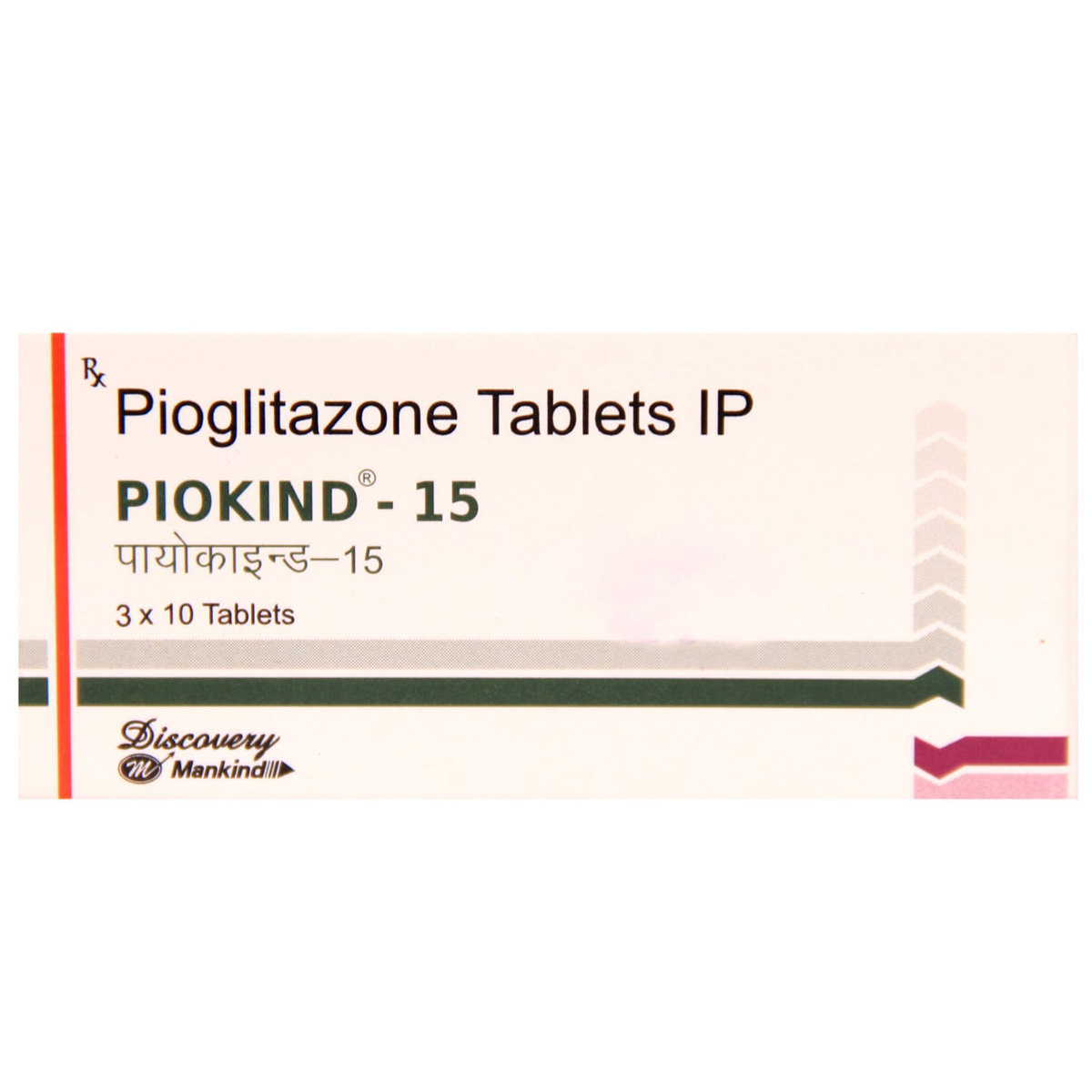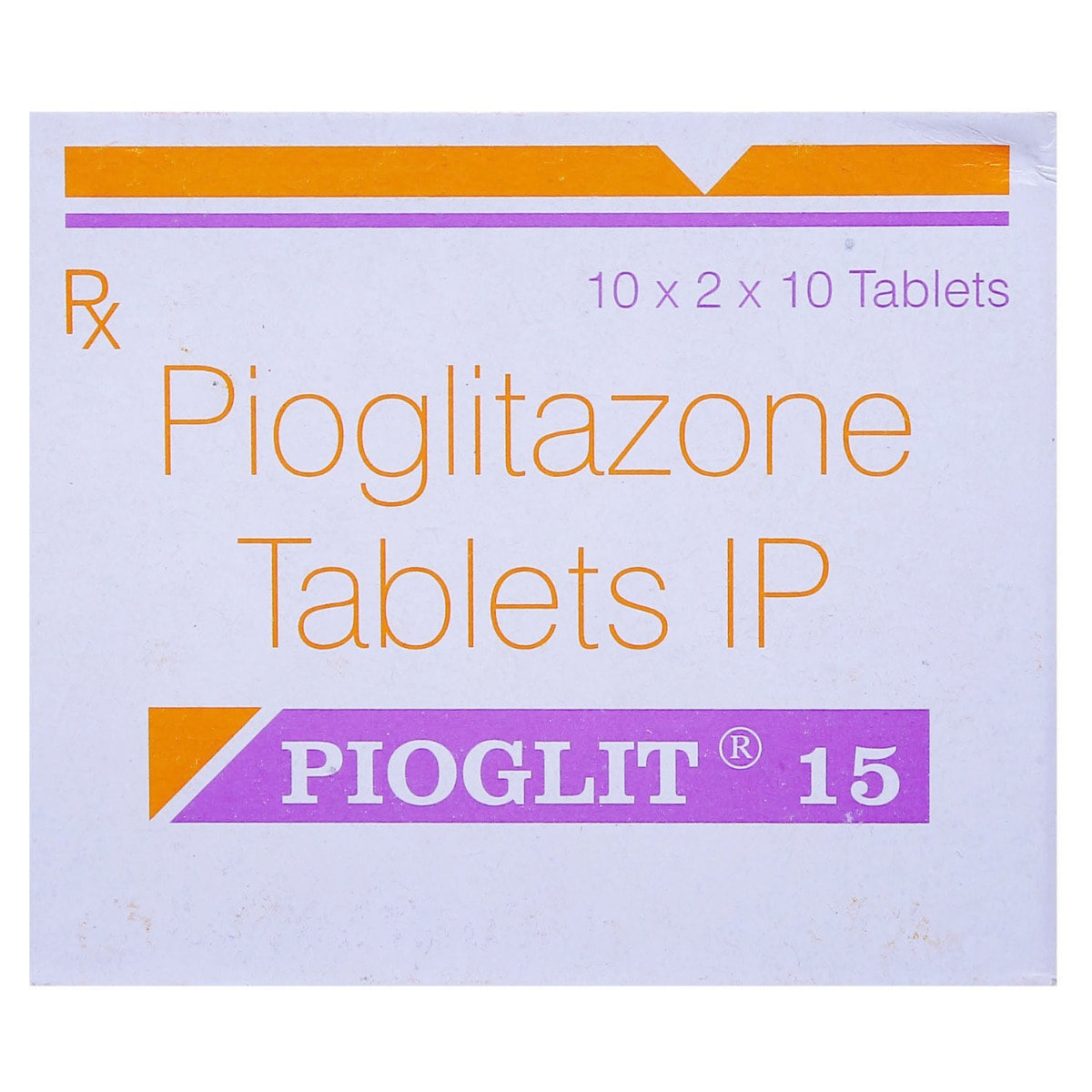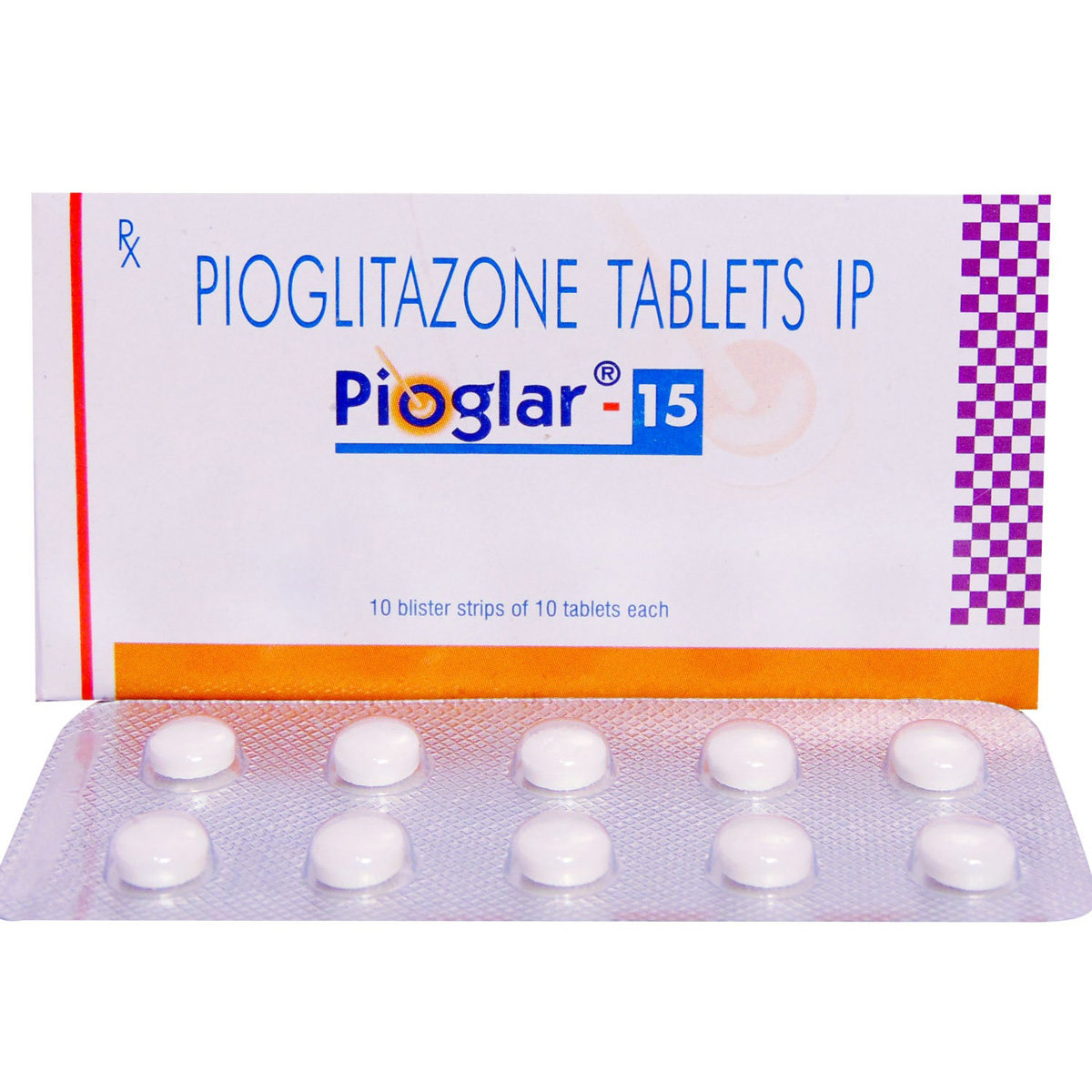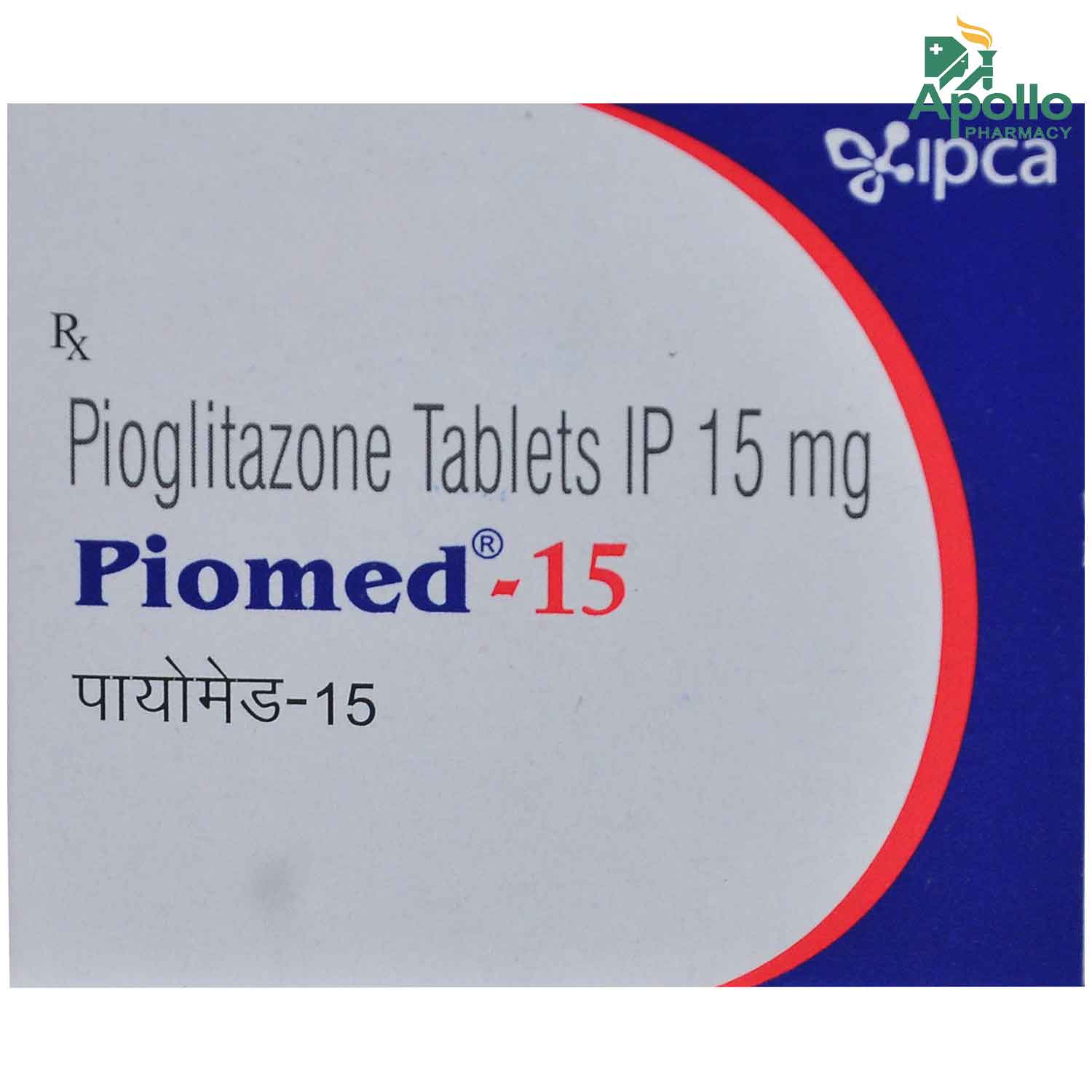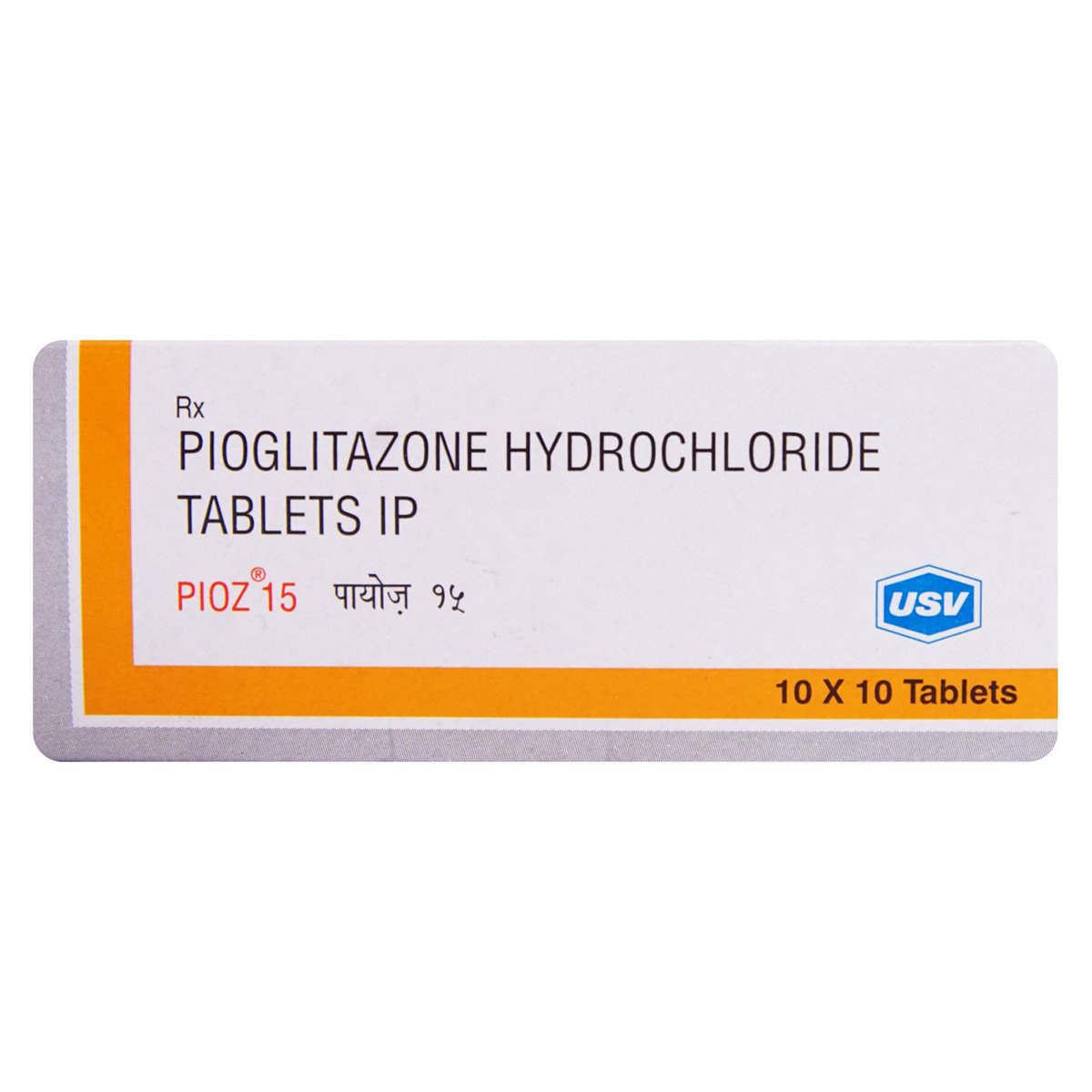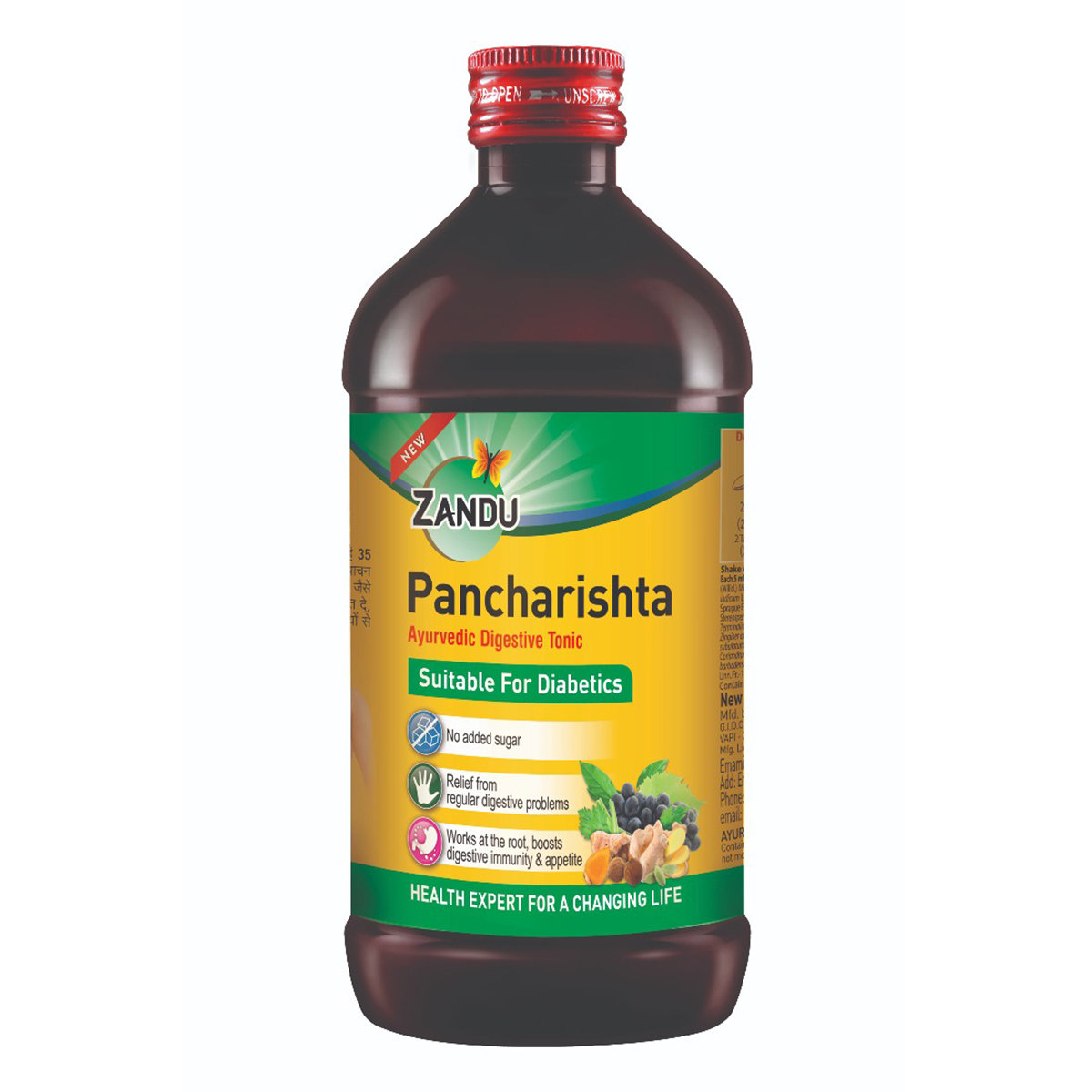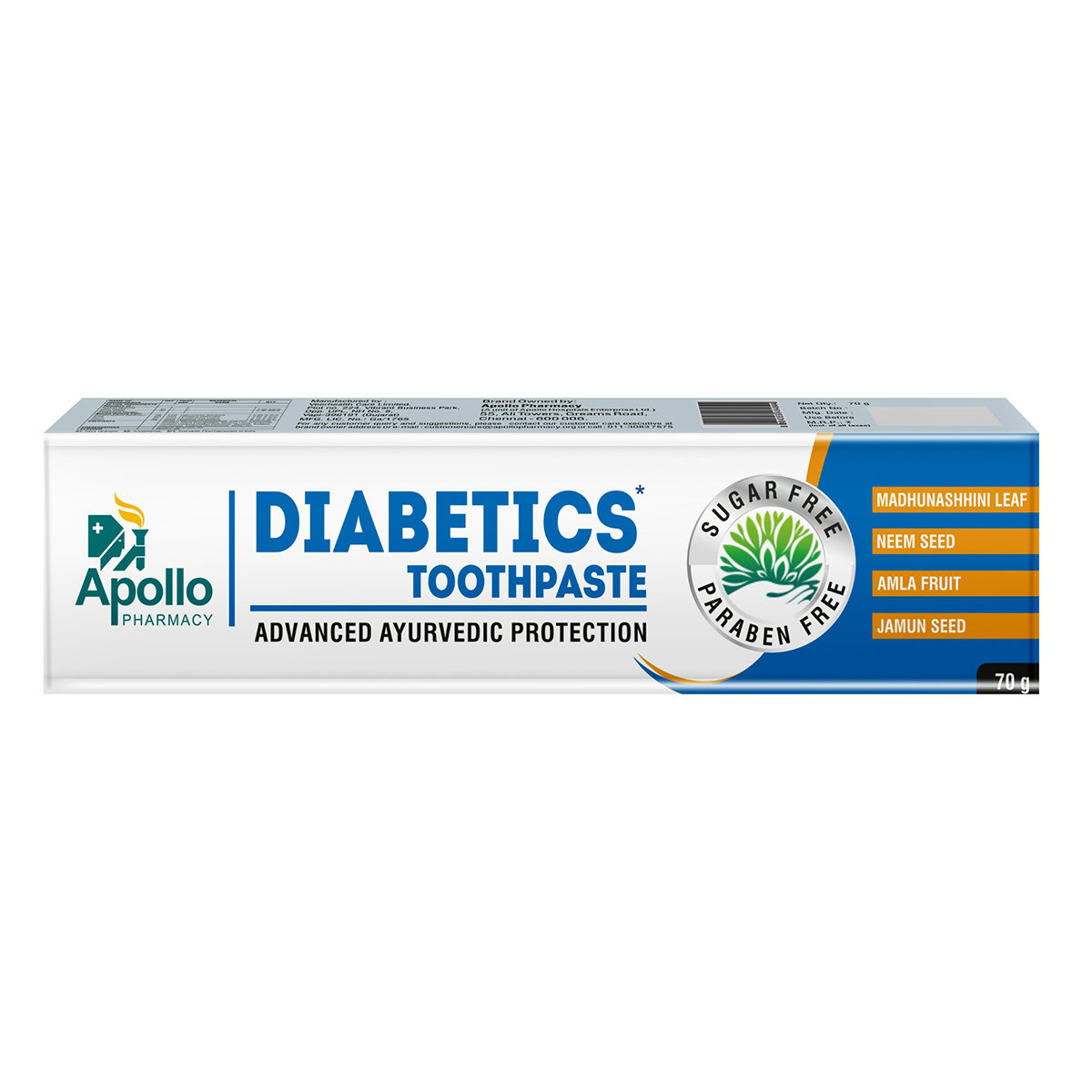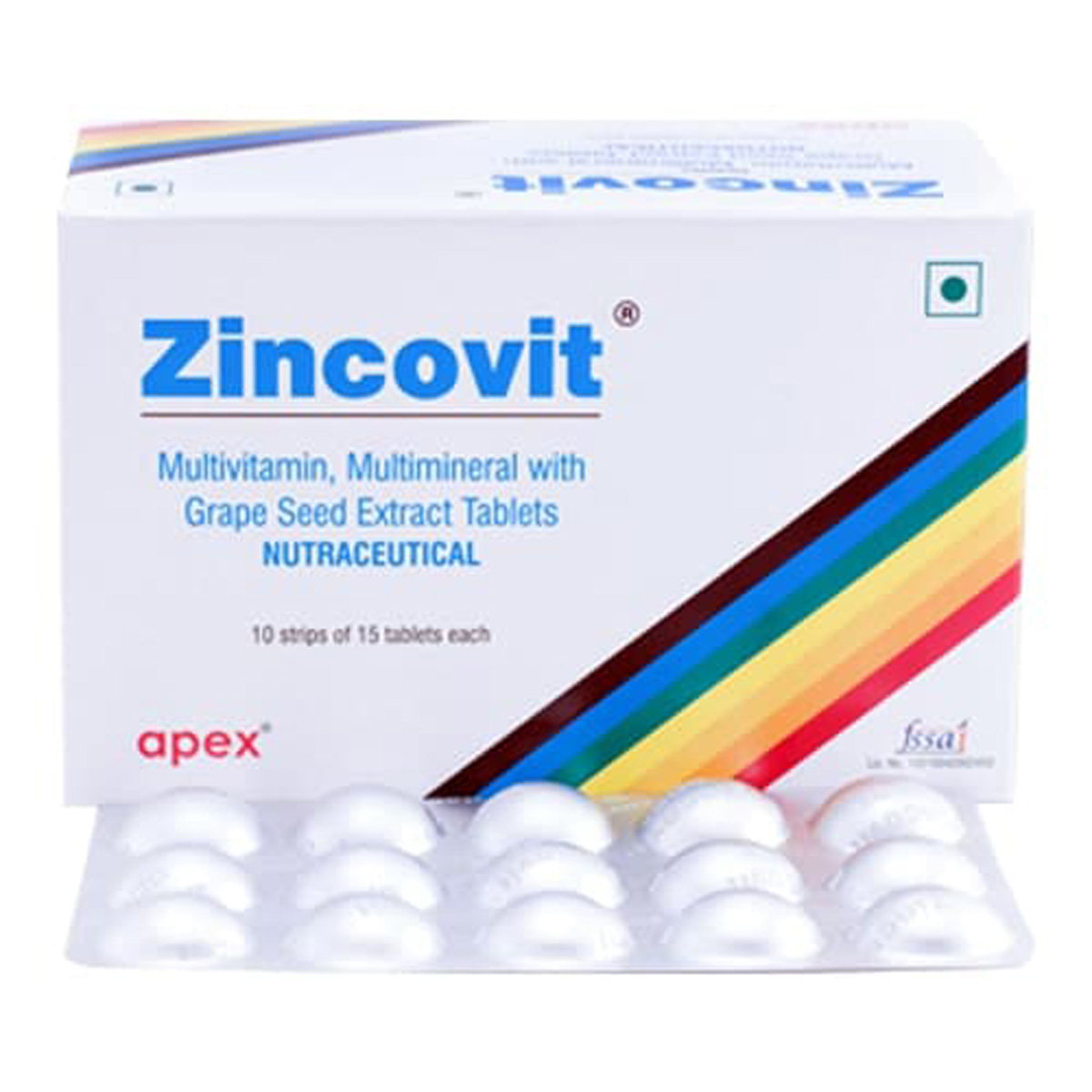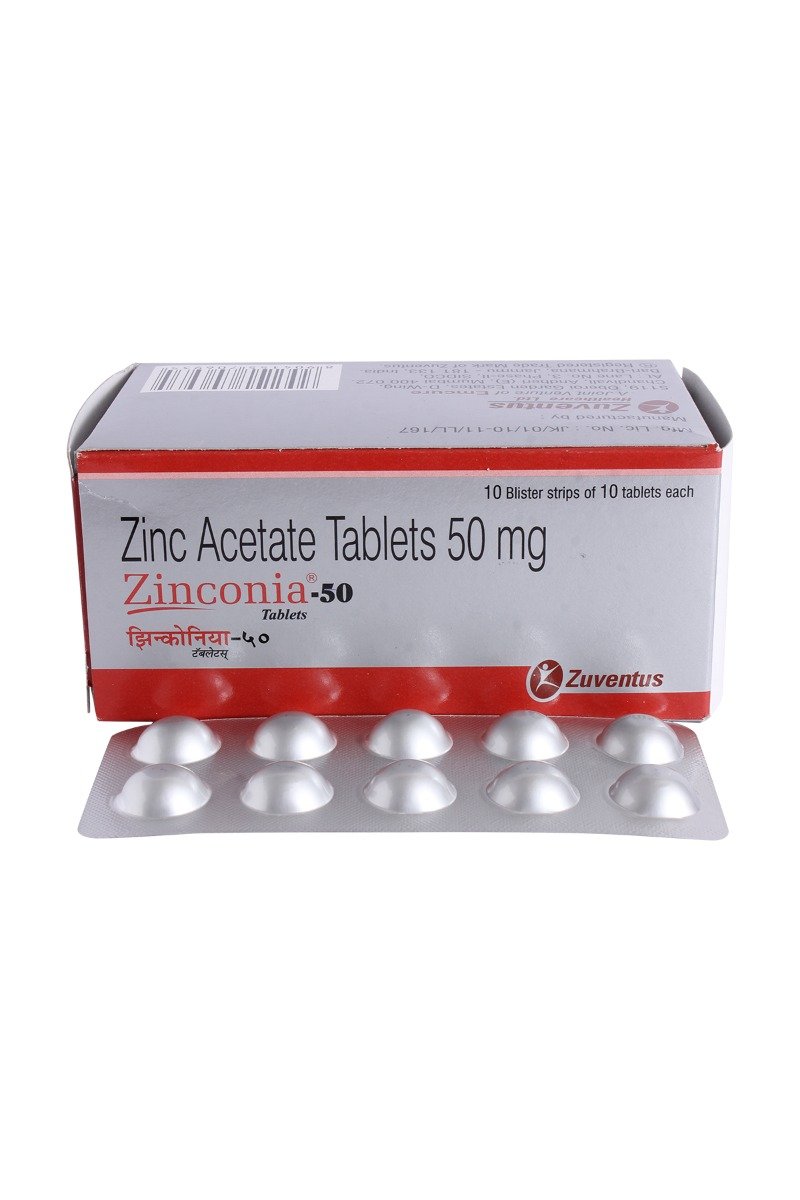Pazo 15mg Tablet
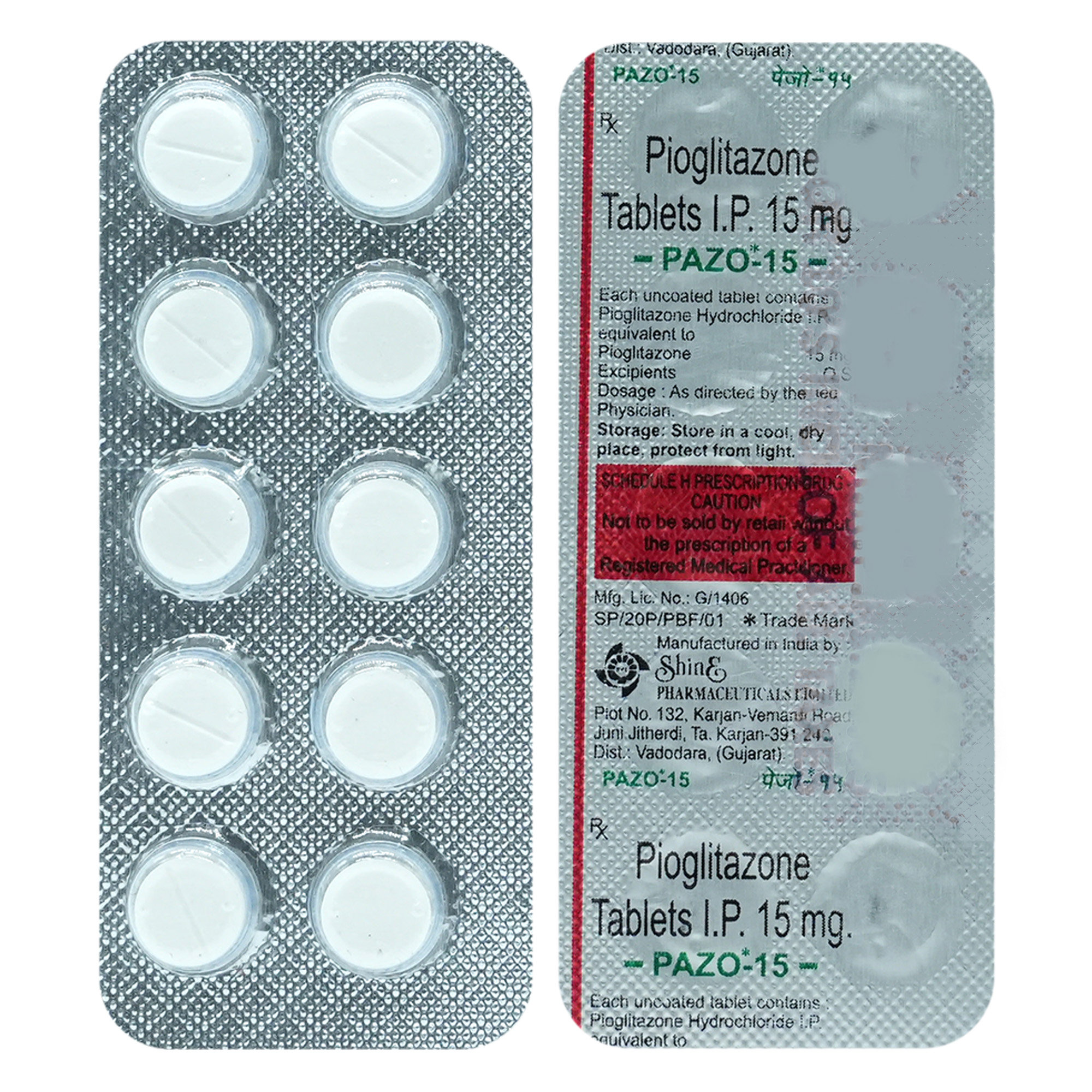
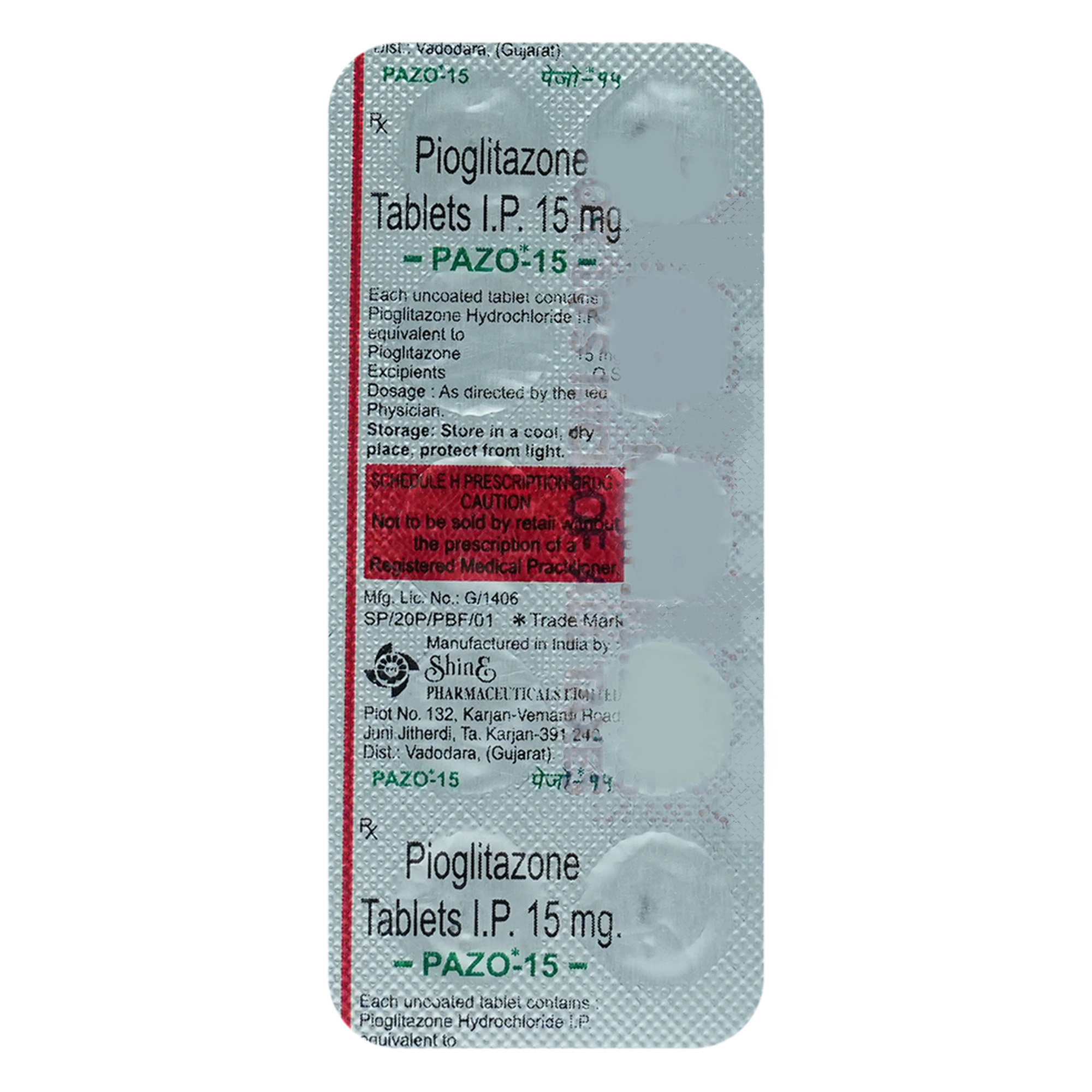
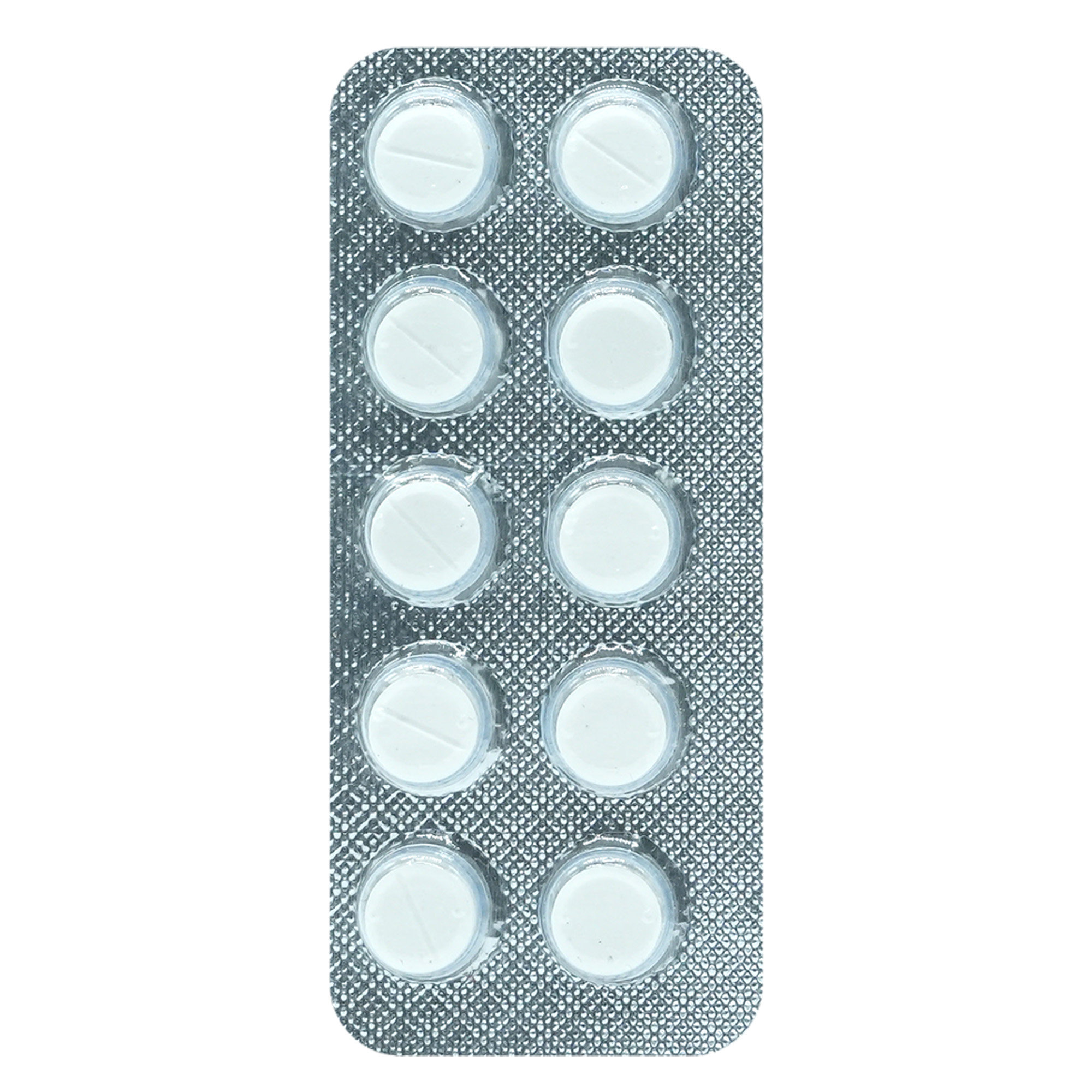
MRP ₹31.5
(Inclusive of all Taxes)
₹4.7 Cashback (15%)
know your delivery time
Provide Delivery Location
Composition :
Manufacturer/Marketer :
Consume Type :
Expires on or after :
Return Policy :

Secure Payment

Trusted by 8 Crore Indians

Genuine Products
Therapeutic Class
Country of origin
Manufacturer/Marketer address
Author Details
We provide you with authentic, trustworthy and relevant information
Disclaimer
Alcohol
Safe if prescribed
You are recommended not to consume alcohol along with Pazo 15mg Tablet to avoid unpleasant side-effects.
Pregnancy
Consult your doctor
Pazo 15mg Tablet is not generally recommended in pregnancy. It's not clear whether pioglitazone can harm your unborn baby. It is highly recommended to consult your doctor before taking this drug in case you are pregnant.
Breast Feeding
Consult your doctor
It is highly recommended to consult your doctor before taking Pazo 15mg Tablet .
Driving
Safe if prescribed
Pazo 15mg Tablet will not affect your ability to drive or use machines but take care if you experience abnormal vision.
Liver
Consult your doctor
Pazo 15mg Tablet to be taken with caution, especially if you have a history of liver diseases/conditions. The dose may have to be adjusted by your doctor.
Kidney
Consult your doctor
Pazo 15mg Tablet to be taken with caution, especially if you have a history of Kidney diseases/conditions. The dose may have to be adjusted by your doctor.
Children
Safe if prescribed
The safety and efficacy of Pazo 15mg Tablet in children have not been established. Pazo 15mg Tablet is not recommended in children.
Product Substitutes
About Pazo 15mg Tablet
Pazo 15mg Tablet is an anti-diabetic medicine belonging to the class of thiazolidinedione (TZD), also called 'glitazones', used to treat type 2 (non-insulin-dependent) diabetes mellitus. Type 2 diabetes is an illness where the body doesn't make enough insulin, or the insulin that it makes doesn't work properly. This is diabetes that usually develops in adulthood.
Pazo 15mg Tablet contains Pioglitazone which helps control the sugar level in your blood when you have type 2 diabetes by helping your body make better use of the insulin it produces. Your doctor will check whether Pioglitazone is working 3-6 months after you start taking it.
Pazo 15mg Tablet should be taken with food or an empty stomach. However, it should be taken at the same time of the day each time for the best results. For better advice, your doctor will decide what dose should be taken, which can change quickly depending on your condition. The most common side effect of Pazo 15mg Tablet is upper respiratory tract infection, headache, sinusitis, myalgia (muscle pain), and pharyngitis. Most of these side effects of Pazo 15mg Tablet do not require medical attention and gradually resolve over time. Please consult your doctor if these side effects become troublesome.
Pazo 15mg Tablet should not be stopped even if you feel better without consulting your doctor as sugar levels change. If you stop taking Pazo 15mg Tablet suddenly, it may increase your sugar levels which could further increase the risk of eyesight loss (retinopathy), kidney damage (nephropathy) and nerve damage (neuropathy). Pazo 15mg Tablet should not be taken if you have type 1 diabetes mellitus, if you are hypersensitive (allergic) to Pazo 15mg Tablet or any of the other ingredients of Pazo 15mg Tablet , have heart failure or have had heart failure in the past, diabetic ketoacidosis (a complication of diabetes causing rapid weight loss, nausea or vomiting), severe kidney or liver disease, bladder cancer. Please inform your doctor if you have any heart disease, are or planning to get pregnant or breastfeeding. The safety and efficacy of Pazo 15mg Tablet in children under 18 years have not been established, so it should not be given to them.
Uses of Pazo 15mg Tablet
Medicinal Benefits Mweb
Key Benefits
Pazo 15mg Tablet is an antidiabetic drug (thiazolidinedione/glitazones) used along with a proper diet and exercise to control high blood sugar (hyperglycaemia) in patients with type 2 diabetes. Pazo 15mg Tablet works by helping to restore your body's appropriate response to insulin, thereby lowering your blood sugar.
Directions for Use
Side Effects of Pazo 15mg Tablet
- Upper respiratory tract infection
- Headache
- Sinusitis
- Myalgia (muscle pain)
- Pharyngitis (inflammation of pharynx located back of neck)
Drug Warnings
Fluid retention (oedema) may occur and can lead to congestive heart failure so, a combination of use with insulin and use in heart failure may increase the risk in patients taking Pazo 15mg Tablet . You should not take Pazo 15mg Tablet if you have kidney disease, as measured by a blood test. Pazo 15mg Tablet , when used with or without insulin, $ name tends to lower the blood sugar level. So, the doctor may lower the dose of insulin. Increased fractures may be reported in some women taking Pazo 15mg Tablet . Patients with bladder cancer and macular oedema (fluid build-up in the macula part of the retina of the eye) should consult the doctor before using Pazo 15mg Tablet .
Drug-Drug Interactions
Drug-Drug Interactions
Login/Sign Up
Co-administration of Pazo 15mg Tablet with Gatifloxacin may sometimes affect blood glucose levels. Both high blood glucose and, less frequently, low blood glucose have been reported.
How to manage the interaction:
Although there is a possible interaction, Pazo 15mg Tablet can be taken with Gatifloxacin if prescribed by the doctor. Consult the prescriber if you experience symptoms such as nervousness, confusion, headache, dizziness, drowsiness, tremors, nausea, hunger, weakness, excessive sweating, rapid heartbeat, increased urination, increased thirst, and increased hunger. Maintaining blood glucose levels is advised. Do not discontinue any medications without a doctor's advice.
Co-administration of Teriflunomide and Pazo 15mg Tablet may increase the risk of liver damage.
How to manage the interaction:
Although taking Pazo 15mg Tablet and Teriflunomide together can possibly result in an interaction, it can be taken if a doctor has prescribed it. However, if you experience symptoms such as fever, chills, joint pain or swelling, unusual bleeding or bruising, skin rash, itching, nausea, vomiting, dark urine, light stools, and skin or eye yellowing, decreased hunger, consult the doctor. Do not stop using any medications without talking to the doctor.
Co-administration of Pazo 15mg Tablet and Leflunomide may increase the risk of liver damage.
How to manage the interaction:
Although taking Pazo 15mg Tablet and Leflunomide together can possibly result in an interaction, it can be taken if a doctor has prescribed it. However, if you have any of the following symptoms: fever, chills, joint pain or swelling, unusual bleeding or bruising, skin rash, itching, fatigue, lack of appetite, nausea, vomiting, abdominal pain, dark urine, light stools, and/or yellowing of the skin or eyes, consult a doctor immediately. Do not discontinue any medications without a doctor's advice.
Taking Pazo 15mg Tablet with Clopidogrel can increases the blood levels of Pazo 15mg Tablet, when these medicines are taken together, you may experience hypoglycemia (low blood sugar).
How to manage the interaction:
Taking Clopidogrel together with Pazo 15mg Tablet may lead to interaction, but it can be taken if prescribed by your doctor. Consult a doctor immediately if you experience headache, dizziness, drowsiness, nervousness, weakness, shaking, or sweating. Do not discontinue any medication without consulting the doctor.
Co-administration of Pazo 15mg Tablet and Lomitapide may increase the risk of liver damage.
How to manage the interaction:
Although taking Lomitapide and Pazo 15mg Tablet together can possibly result in an interaction, it can be taken if a doctor has prescribed it. However, if you have any of the following symptoms: fever, chills, joint pain or swelling, unusual bleeding or bruising, skin rash, itching, fatigue, lack of appetite, nausea, vomiting, abdominal pain, dark urine, light stools, and/or yellowing of the skin or eyes, consult a doctor immediately. Do not discontinue any medications without a doctor's advice.
When Pazo 15mg Tablet is taken with Gemfibrozil, the level of Pazo 15mg Tablet in the blood can go up. This can increase the risk or severity of side effects.
How to manage the interaction:
Taking Pazo 15mg Tablet with Gemfibrozil together can possibly result in an interaction, but it can be taken if a doctor has advised it. However, if you experience visual abnormalities, excessive or quick weight gain, swelling in the ankles or legs, trouble breathing, unusual fatigue, chest discomfort or tightness, fever, chills, joint pain or swelling, unusual bleeding or bruising, skin rash, itching, loss of appetite, fatigue, nausea, vomiting, dark coloured urine, light coloured stools, or yellowing of the skin or eyes, seek medical attention immediately. Do not discontinue any medications without consulting a doctor.
Co-administration of Ketoconazole and Pazo 15mg Tablet, can increase the risk of side effects.
How to manage the interaction:
Taking Ketoconazole with Pazo 15mg Tablet together can result in an interaction, it can be taken if a doctor has advised it. However, consult the doctor, if you experience any unusual symptoms. Do not discontinue any medications without a doctor's advice.
Co-administration of Mipomersen and Pazo 15mg Tablet may increase the risk of liver damage.
How to manage the interaction:
Although taking Pazo 15mg Tablet and Mipomersen together can possibly result in an interaction, it can be taken if a doctor has prescribed it. However, if you experience symptoms such as fever, chills, joint pain or swelling, unusual bleeding or bruising, skin rash, itching, nausea, vomiting, dark urine, light stools, and skin or eye yellowing, decreased hunger, consult the doctor. Do not stop using any medications without talking to the doctor.
Drug-Food Interactions
Drug-Food Interactions
Login/Sign Up
Drug-Diseases Interactions
Drug-Diseases Interactions
Login/Sign Up
Drug-Drug Interactions Checker List
- GEMFIBROZIL
- RIFAMPICIN
Habit Forming
Special Advise
- Keep taking the drug even if you think your blood sugar levels are under control. If you miss a dose, do not take a larger dose. Consult your treating physician for advice.
- Take short, frequent meals, and avoid prolonged fasting when taking this drug. Beware of symptoms of hypoglycaemia which include sweating, dizziness, palpitations, shivering, intense thirst, dry mouth, dry skin, frequent urination etc. Whenever you experience the symptoms mentioned above, immediately consume 5-6 candies, three glucose biscuits, or three teaspoons of honey/sugar and get in touch with your physician. Make sure to carry these with you at all times, especially for long travels.
- Before the doctor prescribes this medicine, it is always better that your physician knows about any underlying conditions like kidney or liver disease, prior heart attack, alcohol intake, etc.
- Avoid drinking alcohol while on this drug as it increases the risk of hypoglycaemia (decrease in blood sugar which might be fatal in some cases) and lactic acidosis (when the lactic acid increases in the body, which impacts the functioning of various organs in the body).
- Try to quit smoking and reduce your intake of carbohydrate-rich food like potatoes, rice, mangoes, bread, sugar etc.
Diet & Lifestyle Advise
- Fill your half plate with starchy veggies, a quarter with proteins, and a quarter with whole grain.
- Eat at regular interval. Do not take the long gap between a meal or snack.
- Monitor your blood sugar level regularly especially when there are a lot of fluctuations.
- Invest at least 150 min of moderate-intensity physical activity and 15 minutes of high-intensity exercise every week.
- Lose weight gradually to achieve a healthy body mass index (18.5 to 24.9).
- Replace refined carbohydrates containing foods with whole grain foods and increase intake of fruits and veggies and other fibre enriched foods.
- Reduce intake of saturated fat (or hidden fats) in the food like chips, crisps, pastries, biscuits and samosas. Choose omega 3 fatty acid-containing oils for daily cooking. For frying, you may use palm oil, mustard oil, groundnut oil, rice bran oil, and safflower oil.
- Do not take stress as it may elevate your blood sugar level. You may adopt stress management techniques like mindfulness, yoga or meditation to control stress-related to blood sugar changes.
- Opt for low-fat dairy products (low-fat yoghurt, fat-free milk and cheese etc.).
- Keep your blood pressure as normal (120/80) as possible. As it reduces the risk of cardiovascular diseases in diabetes patients.
All Substitutes & Brand Comparisons
RX
Piosys-15 Tablet 30's
Systopic Laboratories Pvt Ltd
₹54.5
(₹1.64 per unit)
42% CHEAPERRX
K-Pio 15 Tablet 15's
Blue Cross Laboratories Pvt Ltd
₹32.5
(₹1.95 per unit)
31% CHEAPERRX
Arpie-15 Tablet 10's
Arkas Pharma Pvt Ltd
₹41
(₹3.69 per unit)
29% COSTLIER

Have a query?
Buy best Diabetics products by
Torrent Pharmaceuticals Ltd
Sun Pharmaceutical Industries Ltd
Eris Life Sciences Ltd
Intas Pharmaceuticals Ltd
Lupin Ltd
Micro Labs Ltd
Mankind Pharma Pvt Ltd
Lloyd Healthcare Pvt Ltd
Alkem Laboratories Ltd
Abbott India Ltd
Glenmark Pharmaceuticals Ltd
Cipla Ltd
Macleods Pharmaceuticals Ltd
Wockhardt Ltd
Dr Reddy's Laboratories Ltd
Primus Remedies Pvt Ltd
USV Pvt Ltd
Aristo Pharmaceuticals Pvt Ltd
Emcure Pharmaceuticals Ltd
Alembic Pharmaceuticals Ltd
Ipca Laboratories Ltd
La Renon Healthcare Pvt Ltd
Ajanta Pharma Ltd
Medley Pharmaceuticals Ltd
East West Pharma India Pvt Ltd
Elbrit Life Sciences Pvt Ltd
Corona Remedies Pvt Ltd
Hbc Life Sciences Pvt Ltd
Sinsan Pharmaceuticals Pvt Ltd
Ranmarc Labs
Mitoch Pharma Pvt Ltd
Zydus Healthcare Ltd
Sanofi India Ltd
Akumentis Healthcare Ltd
Fusion Health Care Pvt Ltd
Unison Pharmaceuticals Pvt Ltd
Jubilant Lifesciences Ltd
Novo Nordisk India Pvt Ltd
Tas Med India Pvt Ltd
Blue Cross Laboratories Pvt Ltd
Msn Laboratories Pvt Ltd
Eswar Therapeutics Pvt Ltd
Indoco Remedies Ltd
Q Check Pharmaceuticals
Alteus Biogenics Pvt Ltd
Anthem Bio Pharma
Franco Indian Pharmaceuticals Pvt Ltd
Systopic Laboratories Pvt Ltd
Panacea Biotec Ltd
Zydus Cadila
Biocon Ltd
Edoc Life Sciences Pvt Ltd
Koye Pharmaceuticals Pvt Ltd
Arkas Pharma Pvt Ltd
Diacardus Pharmacy Pvt Ltd
Elinor Pharmaceuticals (P) Ltd
Remedy Life Sciences Pvt Ltd
Saan Labs
Talent India Pvt Ltd
Jarun Pharmaceuticals Pvt Ltd
Capital Pharma
Shrrishti Health Care Products Pvt Ltd
FDC Ltd
Leeford Healthcare Ltd
Nirvana India Pvt Ltd
Elder Pharmaceuticals Ltd
Eli Lilly and Company (India) Pvt Ltd
Glynis Pharmaceuticals Pvt Ltd
Zuventus Healthcare Ltd
Arrient Healthcare Pvt Ltd
Cadomed Pharmaceuticals India Pvt Ltd
Orris Pharmaceuticals
Akesiss Pharma Pvt Ltd
Bal Pharma Ltd
Biochem Pharmaceutical Industries Ltd
Knoll Healthcare Pvt Ltd
Lippon Pharma Pvt Ltd
Morepen Laboratories Ltd
Neucure Lifesciences Pvt Ltd
Opsis Care Lifesciences Pvt Ltd
Wallace Pharmaceuticals Pvt Ltd
Acmedix Pharma Llp
Converge Biotech Pvt Ltd
Erinyle Pharma
Indiabulls Pharmaceuticals Pvt Ltd
Ozone Pharmaceuticals Ltd
Retra Life Science Pvt Ltd
Alvio Pharmaceuticals Pvt Ltd
Geneaid Pharmaceuticals
Heal (India) Laboratories Pvt Ltd
Olcare Laboratories Pvt Ltd
Vasu Organics Pvt Ltd
Kotak Life Sciences
Lakshya Life Sciences Pvt Ltd
Proqol Health Care Pvt Ltd
Sanz Pharmaceuticals
Daylon healthcare pvt Ltd
Mcronus Lifescience Pvt Ltd
Natco Pharma Ltd
Orsim Pharma
Frequently Bought Together

Nestle Resource Diabetic Vanilla Flavour Powder, 400 gm
400 gm Powder
Nestle India Ltd
₹758.6
MRP ₹936.5
19% off
1
+₹583.9
MRP ₹632.5
8% off
1
+₹205
MRP ₹257.5
20% off
1
+₹188.8
MRP ₹214.5
12% off
1
+₹516.6
MRP ₹561.5
8% off
1
+₹279.9
MRP ₹284.5
2% off
1
+₹87.8
MRP ₹97.5
10% off
10
+₹135.6
MRP ₹154.5
12% off
6
+₹176
MRP ₹195.5
10% off
1
+₹279.5
MRP ₹310.5
10% off
1
+Customers Also Bought




